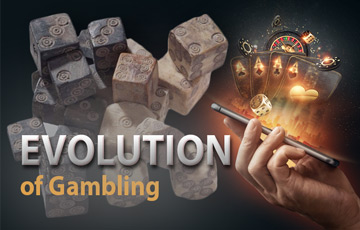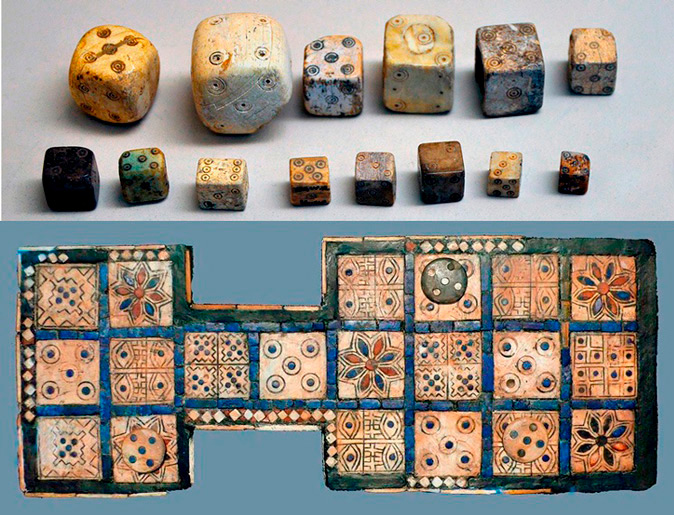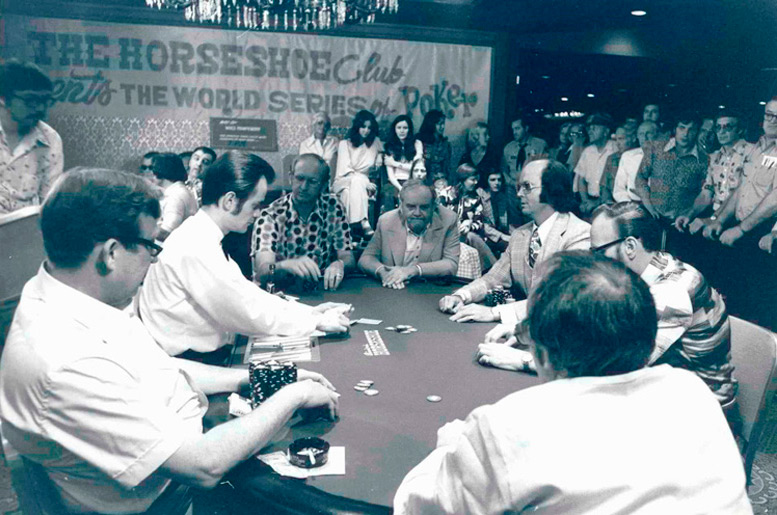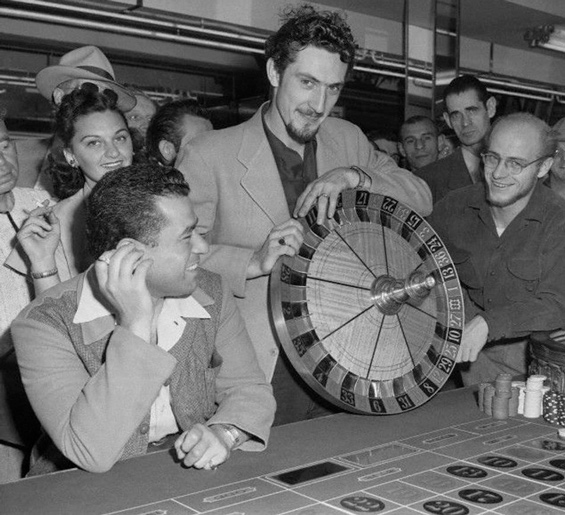Evolution of Gambling

The first historical mentions of gambling are associated with ancient civilizations. There is no exact date of the first game’s appearance or a clear chronology, but archaeologists have found evidence that allows us to draw approximate conclusions. Gambling is an essential part of many people’s lives, allowing them to add bright colors to their everyday life. What was the world’s first game, and how have poker, blackjack, and roulette evolved over the years? Most of them are available in modern casinos, so let’s analyze information about their first prototypes.
Craps
Various facts about dice have been found during archaeological expeditions on all continents. Initially, ancient people used dice for rituals and divination, and later they became a type of entertainment for the elite.
Many old symbolic images have been found in ancient Egypt’s tombs and Tibet’s temples. They depict people playing dice. A confirmation that ancient Indians played this game was described in the epic Mahabharata.
The oldest hexagonal cube was found in Mesopotamia. It was made about three thousand years B.C.
Mentions of dice are found even in the Old Testament, Slavic chronicles, folk literature of Asia, and other parts of the world. Most of the rules have remained the same since the Middle Ages. In this period, the game has become similar to modern craps.
The era of globalization began in the late XIX and early XX centuries. People started to share knowledge, including the gambling sphere.

During World War II, a simple version of the rules was popular among the soldiers that was later spread by Las Vegas residents and visitors. Modern land-based and online casinos feature craps tables that no longer resemble the original format.
Poker
The courtiers of France, Germany, and the UK often played cards. The first types of this entertainment appeared in the 16th century. The rules were simple: three cards were dealt, then bets were made. The prize pool was taken by the one who collected the highest card combination. Initially, there were only three of them, and later new ones appeared.
Two hundred years later, poker made its way to the United States, where it gradually became the game familiar to almost everyone. In 1870 it returned to Europe, but only during World War I it became popular.

The first official international poker championship was held in 1970. Other professional competitions were organized by Thomas Moore a couple of years before that. Nowadays, many versions of poker are available at land-based and online casinos. It’s popular due to many tournaments where you can receive a large sum. However, an excellent combination of luck and skill is required to win.
Baccarat
The history of its origin is unknown. Mentions have been found in many parts of the world, and there are various scenarios about how it was created. In the table below, the most famous and widespread theories are listed, which, however, have never been documented.
| Ancient China | The Chinese game of pai gow, where dice are used instead of cards, is similar to baccarat. The goal is to score 9 points. |
| Italy | At the end of the 13th century, Marco Polo delivered the technique of drawing on dice for pai gow to Europe. The first illustrated and then printed cards appear. Felix Falgher changed the rules of tarocchi and created the prototype of baccarat. Edmond Hoyle, a writer, makes another argument for the game's appearance in Italy. He described the rules of Twenty-One and compared them to baccarat. |
| France | Soldiers who returned from Italy in the 1490s showed the local elite two games. One looked like a modern version of baccarat. |
| North America | The first mention was found in an article in the New York Times in 1871. But it is generally accepted that baccarat has been known in the United States since 1911. |
The game experienced its second debut in American casinos in the late 1950s. The cinema industry had a significant influence on its popularization. In one of the movies, James Bond masterfully played baccarat in one of the VIP halls of Monte Carlo.
In the US, the mini version is popular, while in Macau, gamblers use different rules. In modern casinos, you can find both classic and new versions of baccarat.
Blackjack
Historians have found references to games similar to blackjack in French and Spanish sources. A reliable date of its appearance is unknown. In the stories of Miguel de Cervantes, dating back to the beginning of the 17th century, there is a description of a game where players have to score 21 points. The discipline became widespread in the 1900s when it came to North America. In 1931, Nevada casinos introduced an innovation — a 10:1 payout for a combination of the black Jack and Ace of spades. Since then, the name “blackjack” has been used, and the game is still popular.
Roulette
The creator of roulette is still unknown, but some other facts are confirmed:
- The first description dates back to 1796. In his book La Roulette, Jacques Lablee explained the rules in detail.
- Previously, the Zero sector was red, and the double Zero was black. In 1980, they received a modern look.
- Whereas in Europe, only one Zero sector was used, in the US, the double Zero sector was added. In American roulette, the house edge is increased.
- From 1848 onward, roulette tables were actively set across the United States. They were even placed in the streets.
- In Paris, roulette has retained its appearance since 1796, along with all the inscriptions.
Some historians claim that Blaise Pascal is the inventor of roulette. This is partly true: the French mathematician and physicist did not invent the game itself but a device with a rotating ball. Casino owners just have adapted it to their needs. Also, some researchers believe that the mechanism of roulette is a hybrid combination of the Italian entertainment Biridi and the Wheel of Fortune.

The worldwide spread of the game leads to different versions. In modern casinos, there are at least three types of roulette: French, European, and American.
Slots
The first slot machine with three reels and one payline appeared in 1895. It became the progenitor of all slots. The slot machine created by Charles Fay is associated with classics in modern casinos. The first mechanical slot machines quickly gained popularity. In the 1940s, modernized slots from the Bally company appeared. Electromechanical slot machines had many innovations, including coin-operated storage, which automatically gave out winnings.
In 1976, people got acquainted with video slots. They had special screens instead of mechanical reels. Developers improved slots and implemented various innovations. And in 1995, the era of rapid development in the gambling industry began. Slots became available in online casinos, and their number is increasing every day.
The Future of Casinos and Gaming
For the last 100 years, casinos have been offering a standard set of gambling activities. But the service has significantly improved. If there is no opportunity to play at land-based venues, then online casinos work for all adult users. New technologies will soon allow each customer to feel the atmosphere of real gambling venues without leaving home. VR and AR tools are already being developed and implemented.


